Not much attention is given to sales training for negotiation. Because this is true, most salespeople offer concessions, get a signature on a contract, and move onto to the next deal. Very few stand up to the first request for a lower price by pushing back and defending their solution and the investment required to deliver it. Here is a guide to mastering B2B negotiation effectively in sales.
Retain the Ability to Walk Away
The person in the more powerful position tends to have the upper hand in a negotiation. Prospecting is what levels the playing field. Let me explain. What puts you in an inferior position in a negotiation in B2B sales is an inability to walk away from a bad deal.
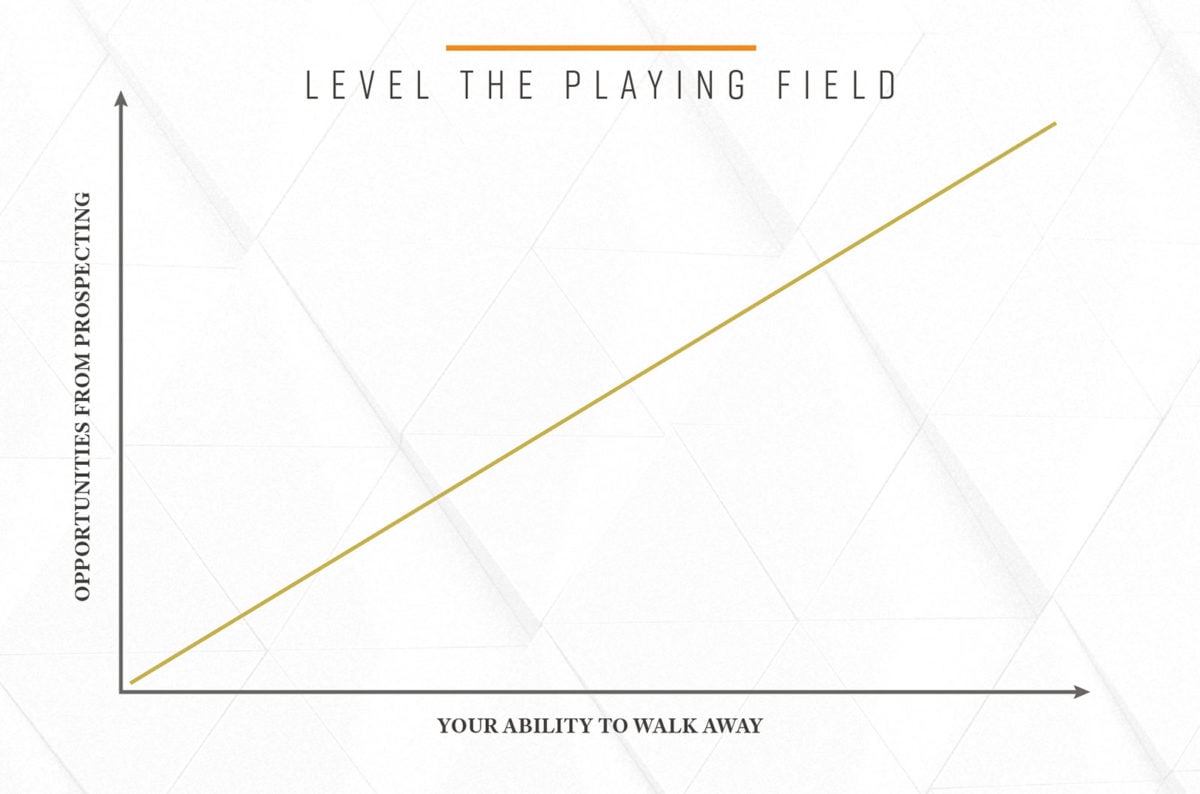
The way you end up needing a deal is by not having enough opportunities to make your plan. If you need a deal, it means you are not doing enough prospecting.
Salespeople who take bad deals do so because they feel they have no choice. They harm their company by agreeing to contracts that put the company in a position to have to spend the money to serve the client without being able to generate the profit necessary to do so effectively. They also harm the client by allowing them to believe they can expect the results they need without making the required investment.
By retaining your power to walk away, you put yourself in a position to negotiate.
Make Sure You Have Been Selected
There is never a reason to negotiate unless you have already been chosen. When you negotiate while your client is still considering your competitors or other options, you are not negotiating with your prospective client. You are negotiating with your competitors, allowing your contact to leverage your desire to win to play you against each other. You don’t want to win a race to the bottom against your competition; you want to let them win that race by not running it.
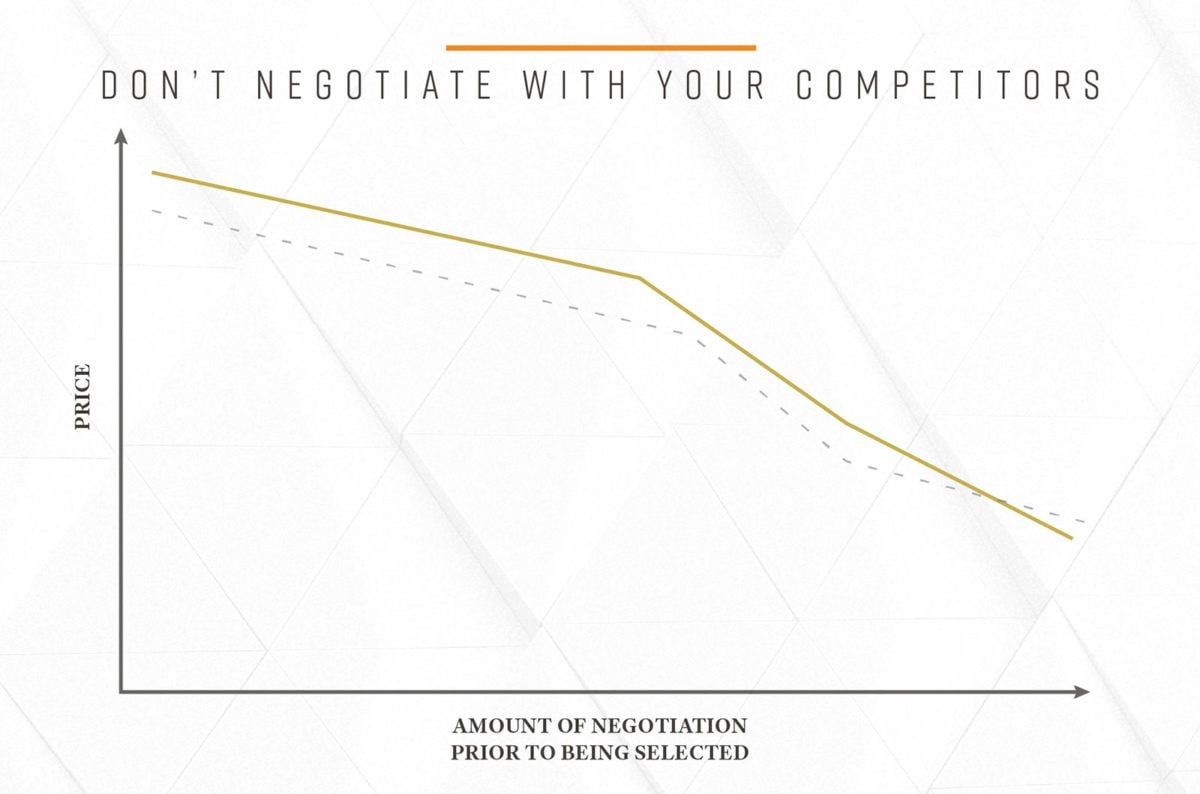
Before you negotiate, ask if you have been chosen. If you haven’t been selected, then you have to ask for a conversation to make sure you are the right choice, promising your client that you are confident you will come to some agreement, but what’s most important is ensuring you are the right partner. You need to demur, refusing to engage in a negotiation until you are selected.
Most of the time, this is about the price. If you have a higher rate, you will have to look a little further down on this list for a strategy to justify the delta.
Negotiate Once
You will have a tough time finding a sales organization that teaches and trains its salesforce in consultative sales negotiation. Many of the public negotiating courses make negotiating too complicated and cannot convert their negotiating training to the conversations we have in sales. In sharp contrast to the lack of training for salespeople, professional purchasing agents are trained to negotiate, including tactics designed to extract more significant concessions.
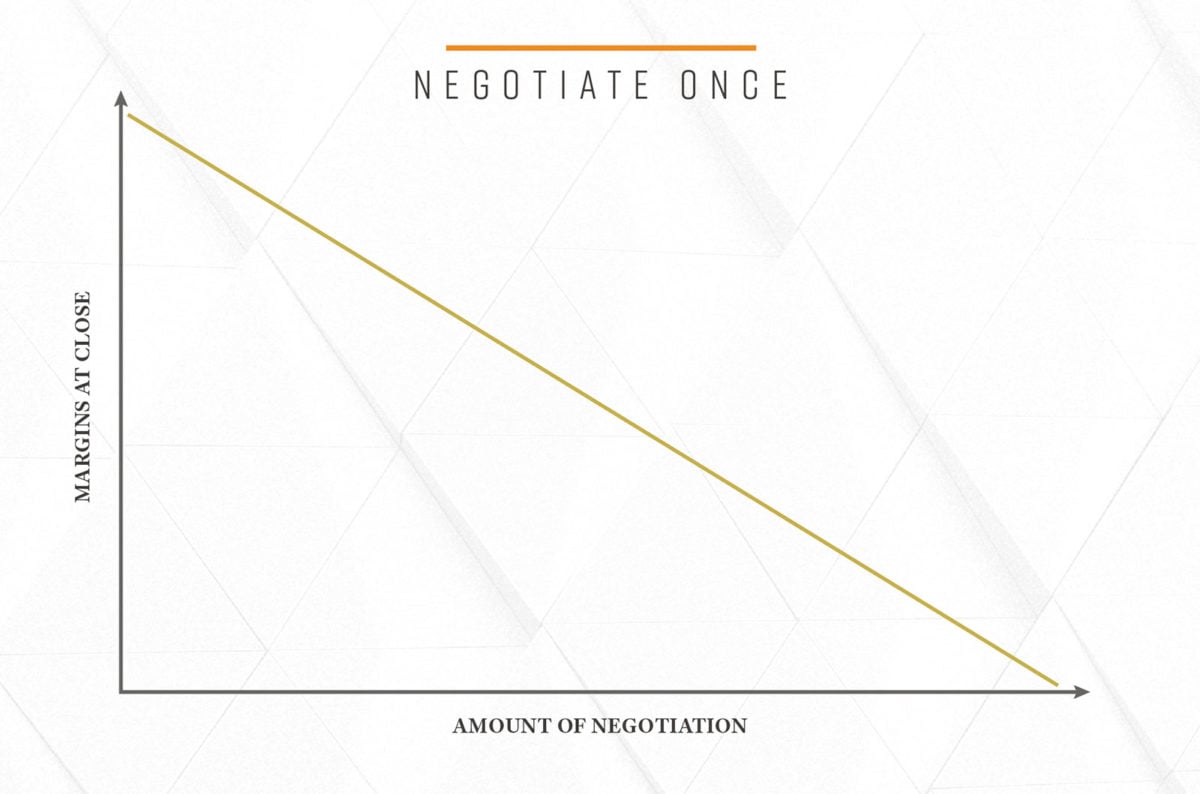
One tactic commonly deployed against salespeople is to have their primary contact inform the salesperson they have been selected, negotiating a relatively small price concession. Once that concession has been extracted, the contact tells them their purchasing manager will not agree to that price, with the purchasing manager capturing a second discount. To get a third bite at the apple, the CFO steps in and informs the salesperson their pricing is outside the acceptable range.
If you are going to negotiate, make sure you have all the necessary parties in the room, those who will be signing an agreement after a successful negotiation.
Don’t Offer to Talk to Your Manager
Never offer to go and speak to your manager about a price reduction. By doing so, you have already projected that you don’t believe the investment is necessary to the outcomes you are promising to deliver, that it is customary for you to lower your prices and that you have no real power to negotiate. Worse still, you are not negotiating with your client; you are now negotiating with your sales manager, both of you negotiating with your company.
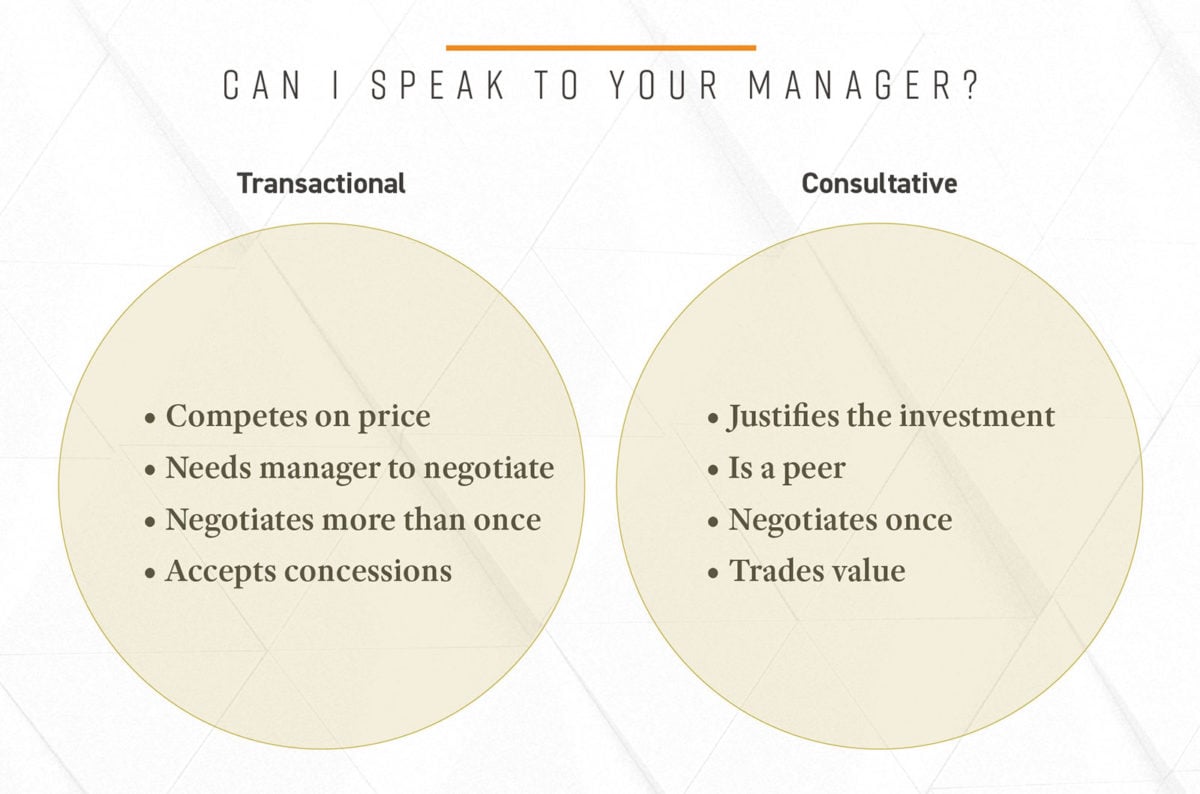
There is a lot at stake in these conversations; one of them is your position. When you have to run back to your manager, you are providing evidence that you are something less than a peer. Because your role in consultative sales is to provide your clients with the advice and counsel about the decisions they make, your lack of ability to deal with a pricing objection weakens your position.
You are better off pushing back and negotiating with your client, even if you don’t agree. You can always ask to get back together to look at options if you need more time.
Defend the Investment and the Solution
The right solution requires a specific investment, one capable of supporting the outcomes you are promising to deliver to your client. The very best first response to a request for a discount (the primary area of conflict in a B2B sales negotiation), is to explain that the investment is exactly what is necessary to produce the outcomes and that it is what is required to deliver your solution. You can offer to change the solution to match the investment, but not the other way around.
Any hesitation here is proof that you don’t believe that your investment matches the outcomes and the solution. Before you decide to offer some concession, reinforce the value of the solution, restate how the investment matches—and allows for—the strategic outcomes they need, and how it prevents failure and ensures success.
Pushing back here helps you ensure your clients that their investment can achieve the results you promise them by making sure you there are enough funds to invest in those results.
Justify the Delta
In consultative sales, you are always going to have competitors who offer your clients lower prices, and who always suggest that they are equal to or better than you and your company. Some will say things like, “We are just like them, with a lower price.” In truth, they are not the same, in large part because they don’t make the same investments your company makes, or they do things differently as a way to reduce their costs to match their lower price.
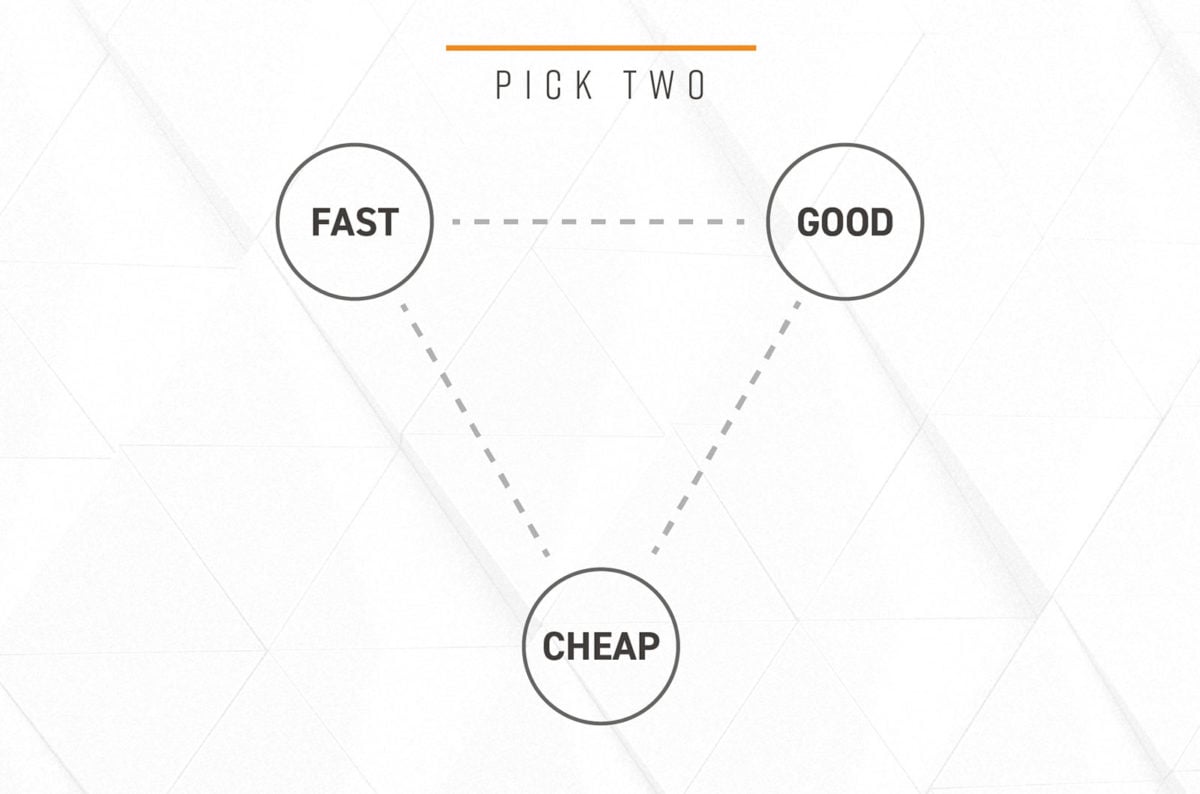
It is not your client’s job to understand the price difference and the implications for their business. It is your role as a consultative salesperson to explain why your price is higher and how you invest their money in their solution, providing better results and fewer problems than lower-priced alternatives, especially in the context of B2B sales negotiation.It is your job to justify the delta between your price and your competitor’s price. Doing so protects the investment you are asking your client to make.
Outline the Risks of Underinvesting
There is a difference between price and cost. Things with a higher price tend to come with a lower cost, as things with a lower price come with a higher overall cost. When you allow your client to underinvest in the results they need by closing out your competitor, choosing a lower price means higher costs. So what are those costs?
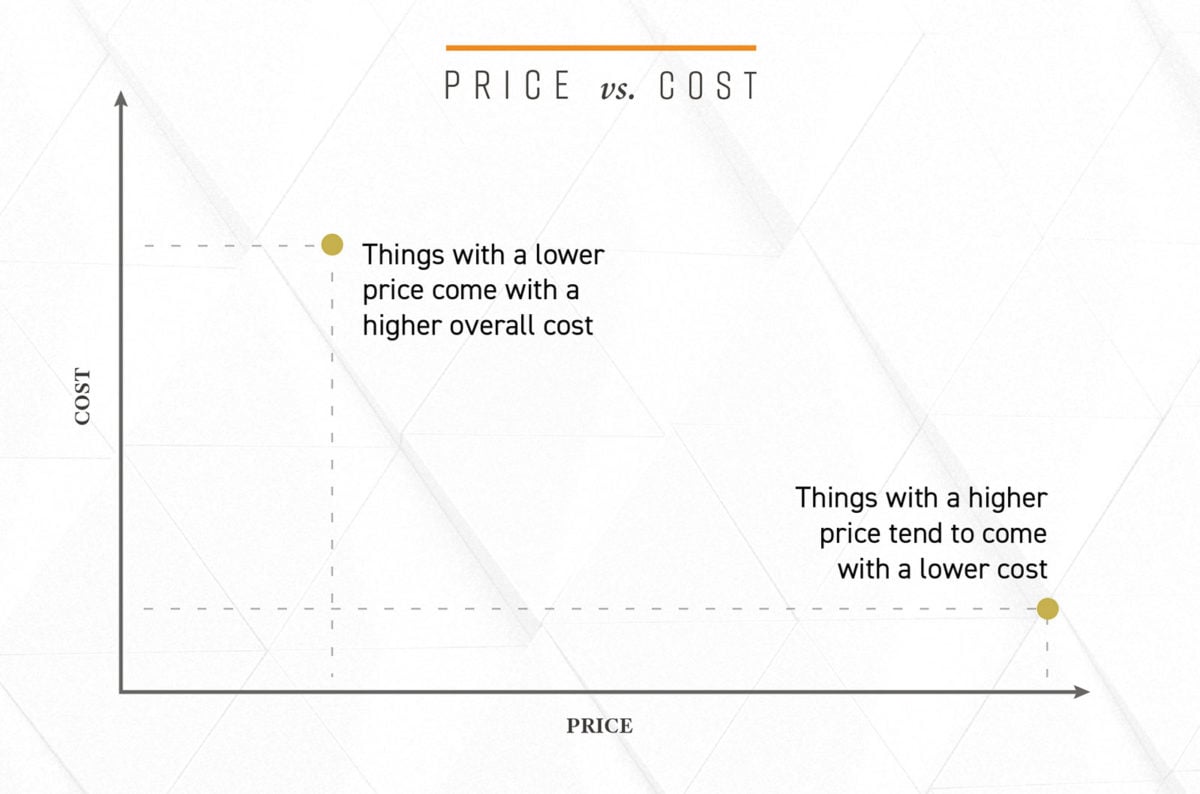
You have to be able to outline where exactly your dream client is going to end up spending more money by not paying a little more. It may be service failures, a lack of attention, delivery times, more labor hours, or a host of other soft costs that your solution would allow them to avoid. This is the other side of justifying your delta, with one side showing the investments you make, and this conversation exposing the risks of underinvesting.
Respond to an Anchor with an Anchor
Sometimes a contact will set an anchor by throwing out a number that is in no way agreeable. This is called an anchor. You are now negotiating from the starting point your client determined. One way to deal with an anchor that is impossible to meet is to agree to it while setting an equally unacceptable anchor in response.
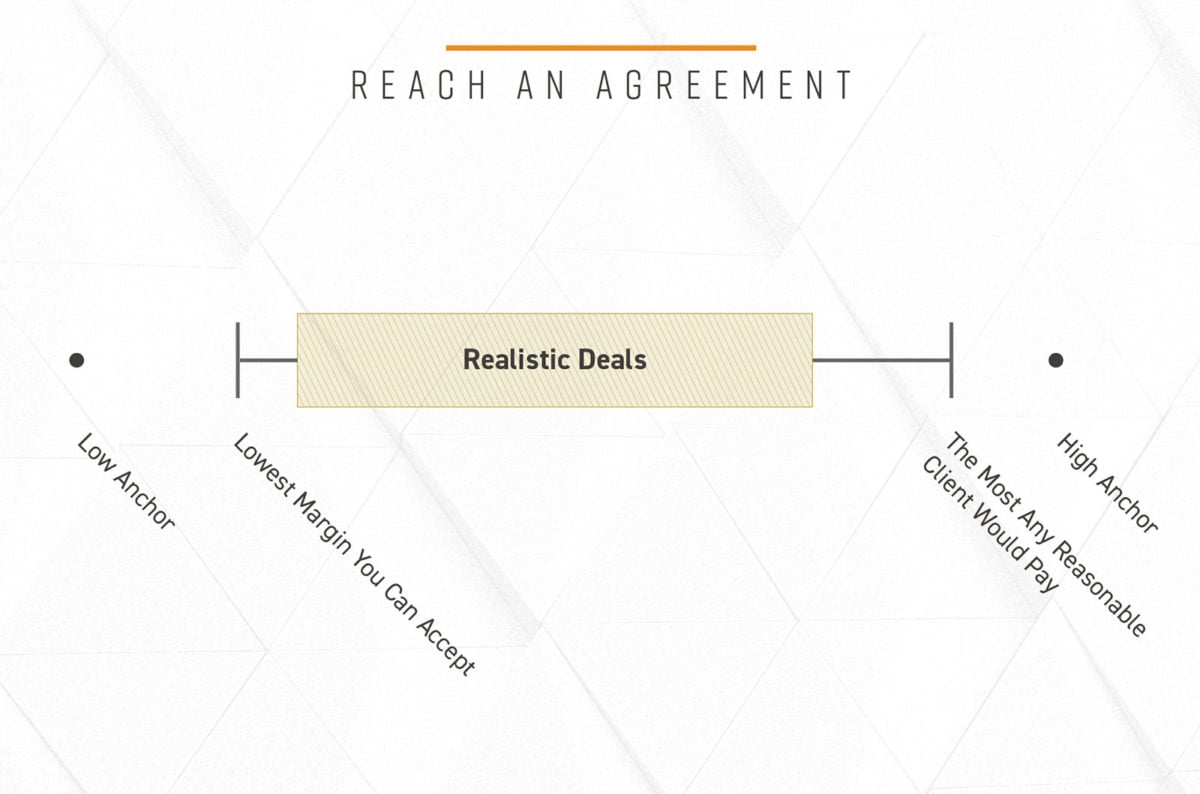
Imagine a client that tells you must reduce your price by thirty-percent, an unreasonable request, and something impossible for you. You respond by saying, yes, and adding the equally outrageous terms that the deal is for seven years with the first three years being paid upon signing the contract, an agreement that is impossible for your client to make. Once rejected, you can reset the anchor, suggesting a smaller concession on your side for an equally smaller concession on theirs.
Breaking the anchor with another anchor allows you to start the negotiation over from a place where an agreement is more likely.
Ask for Something of Equal or Greater Value
Most B2B salespeople do not engage in substantial B2B sales negotiation beyond negotiating the concessions they offer their clients, typically handling these discussions with their sales manager.In a negotiation, both sides offer and ask for changes to the overall deal. When only one side asks, and the other agrees, you have a concession, not a negotiation. If you are going to negotiate, negotiate.
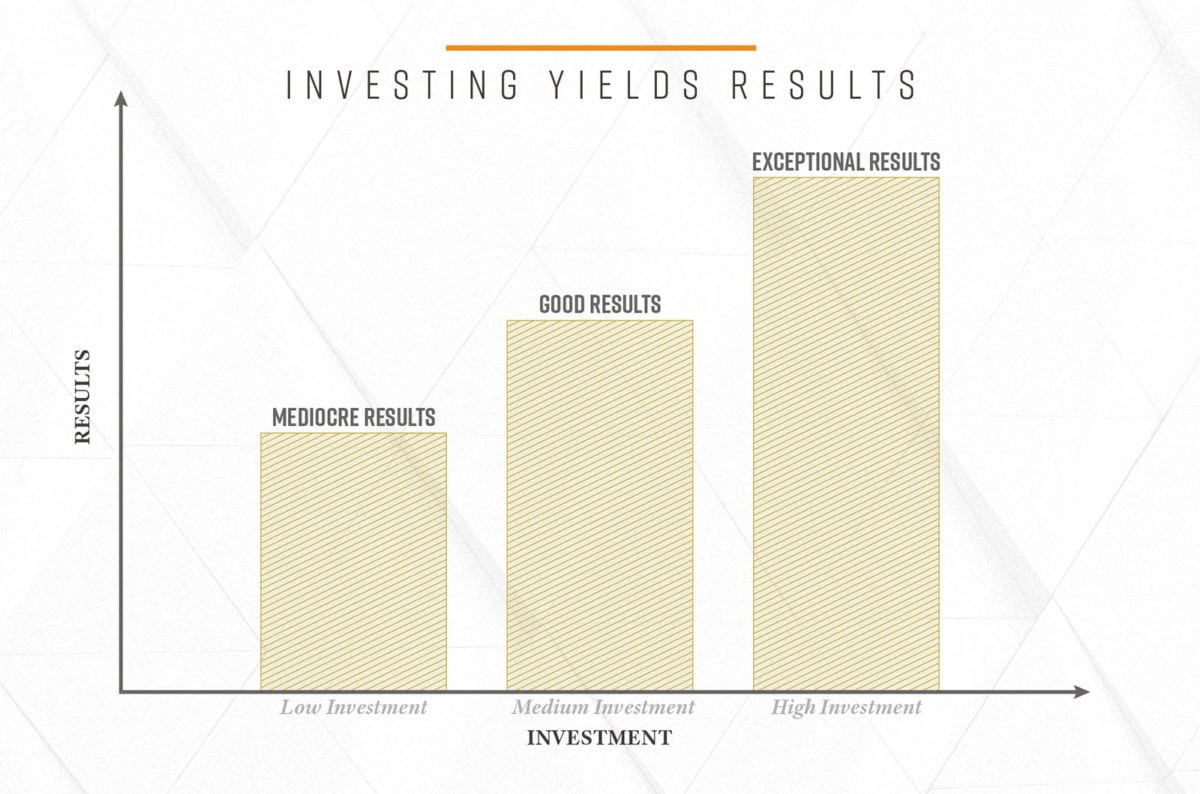
When your prospective client asks for a change, you ask for a change that creates equal or greater value for you, recognizing that agreeing to their ask created greater value for them. In a B2B negotiation, you have the chance to make the solution more valuable to both parties, but only if you are willing to engage in exploring options and trading things that create value for each party, based on what’s important to them.
If you don’t ask, you are not negotiating.












.jpg?width=768&height=994&name=salescall-planner-ebook-v3-1-cover%20(1).jpg)


